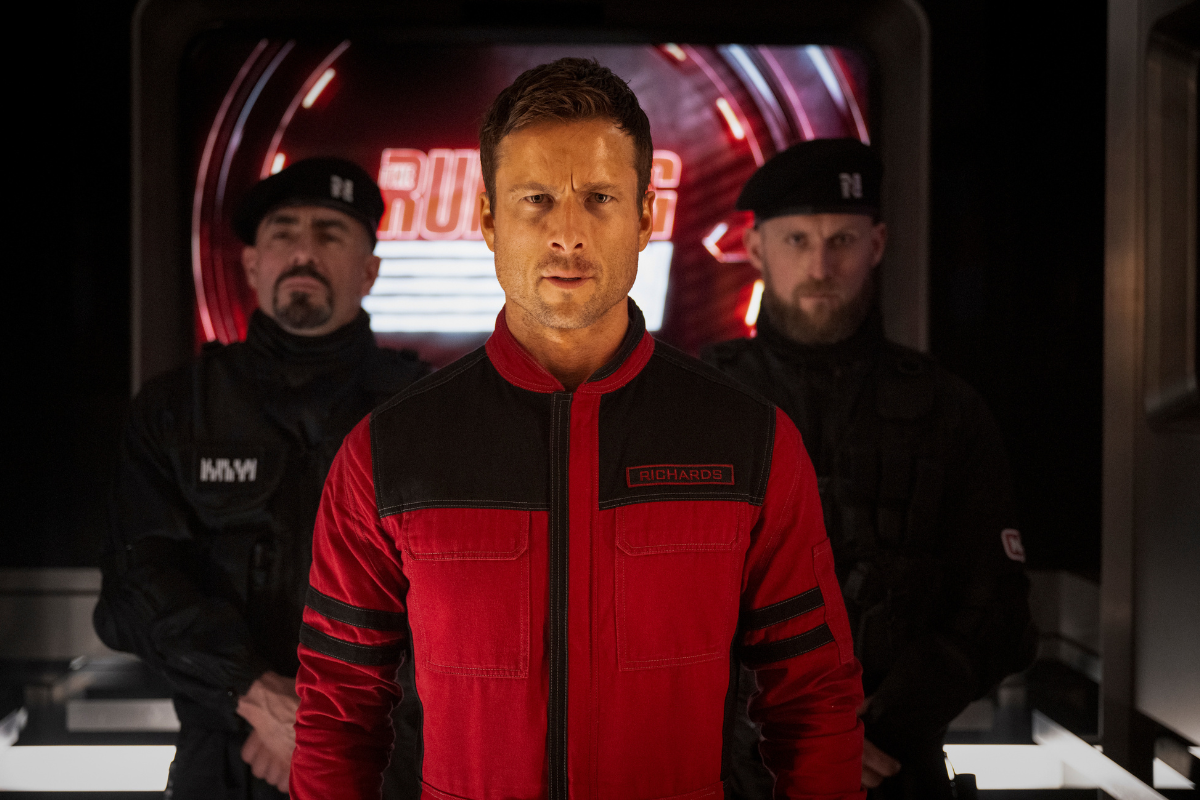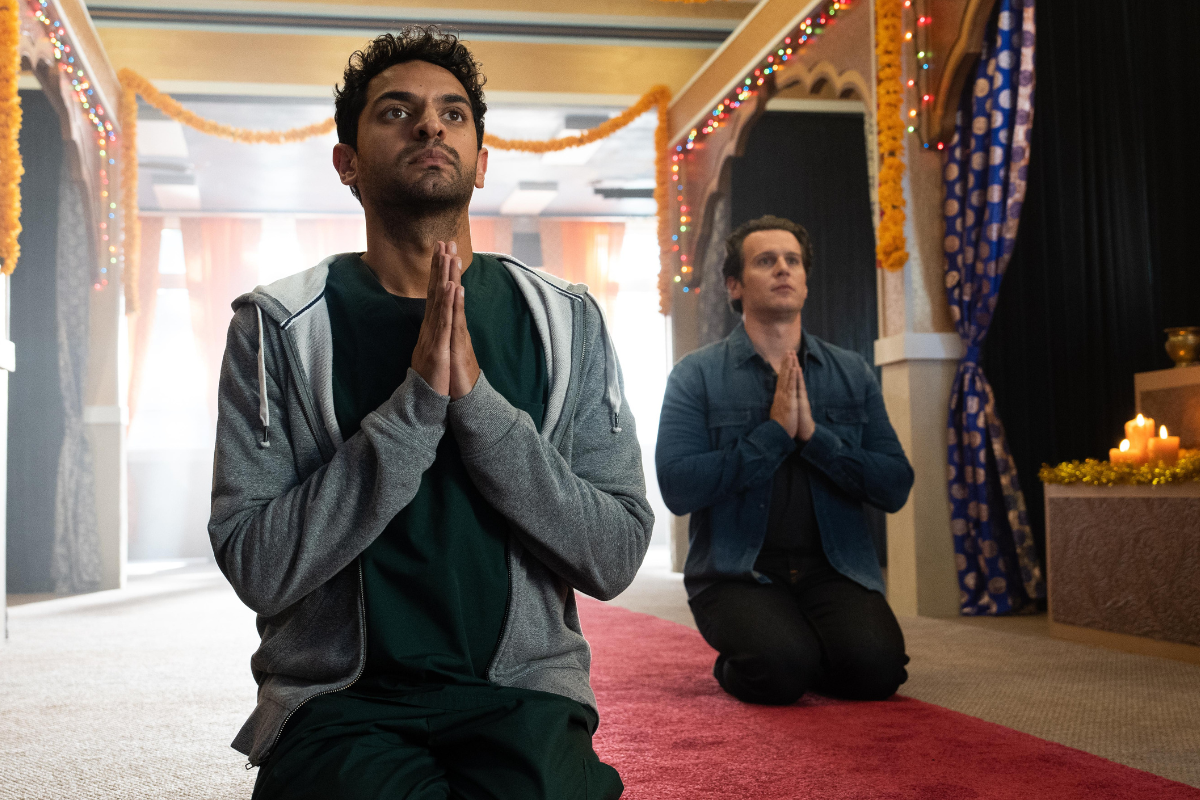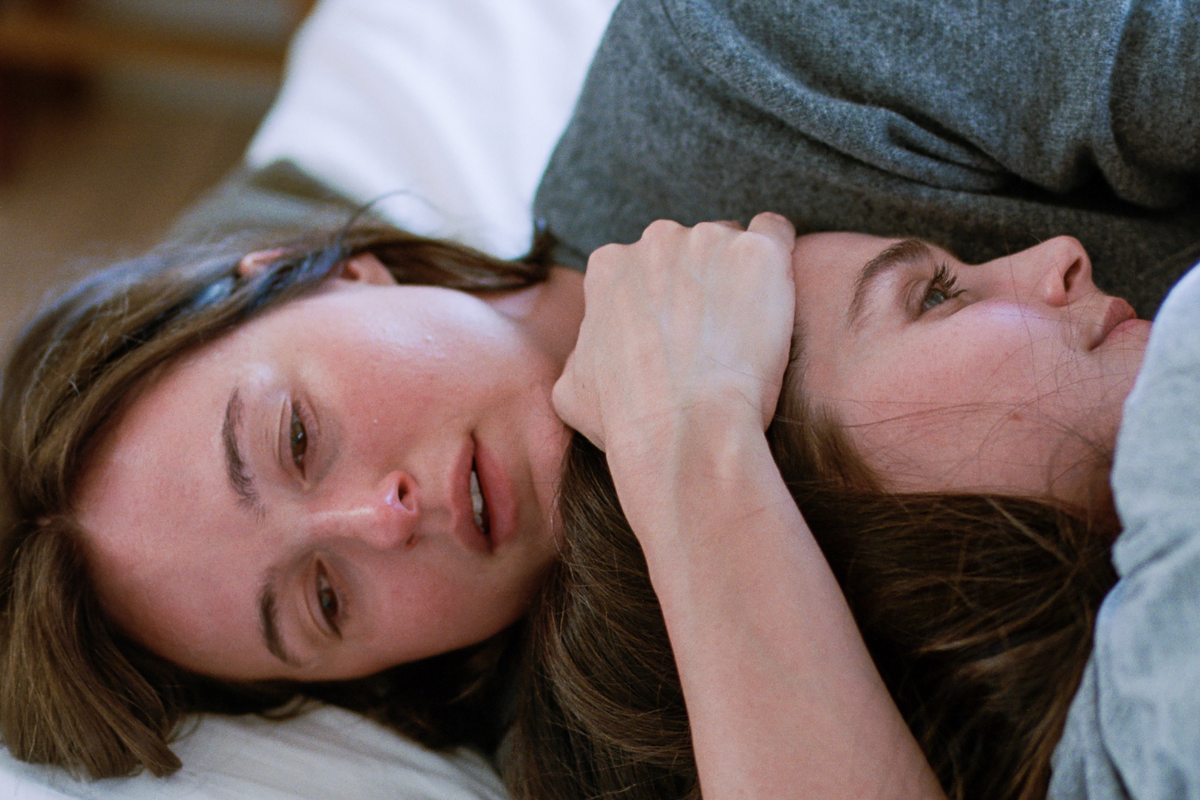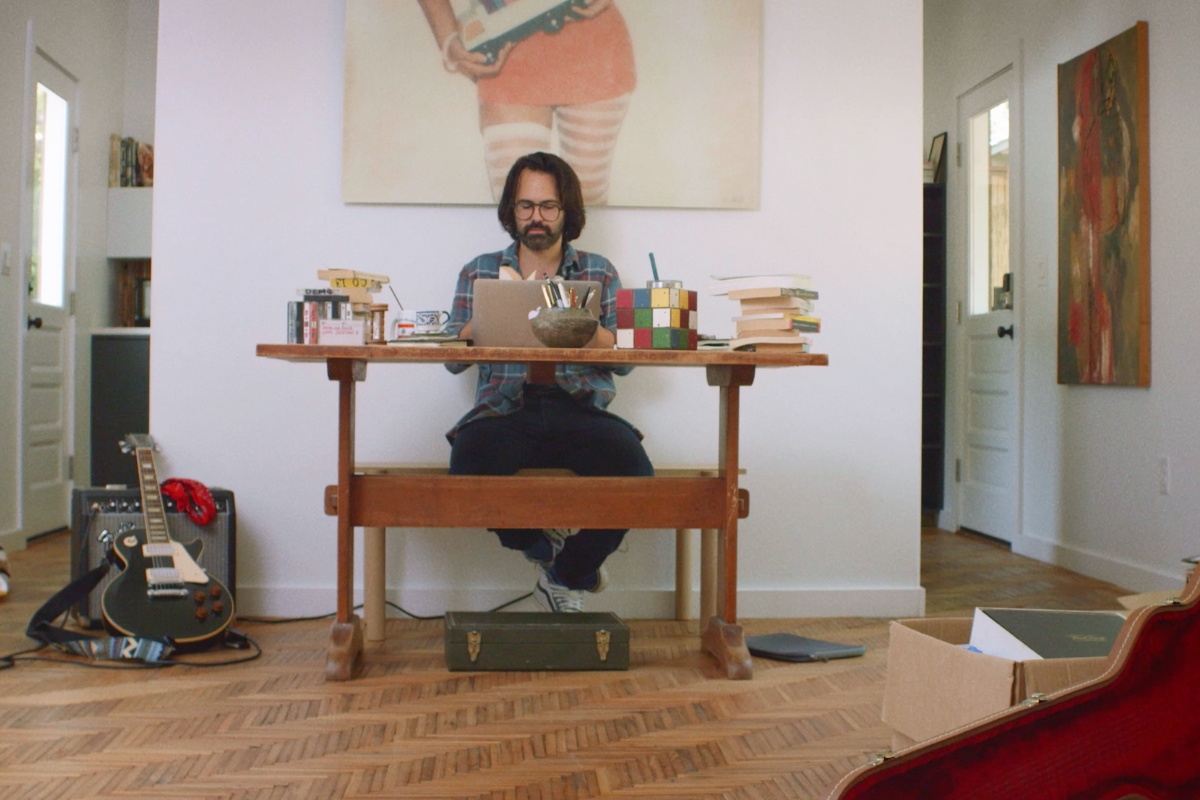Sundance Film Festival 2023 – The Secret as a Narrative Framing Element: A Conversation with ‘The Persian Version’ Writer-Director Maryam Keshavarz
Maryam Keshavarz recently spoke with Script about why she wrote this screenplay, how she found the narrative framing element, diving into the ensemble comedy, and so much more.
Coming from two countries at odds with each other, Iranian-American Leila (Layla Mohammadi) strives to find balance and embrace her opposing cultures, while boldly challenging the labels society is so quick to project upon her. When her family reunites in New York City for her father’s heart transplant, Leila navigates her relationships from arm's length in an effort to keep her “real” life separate from her family life. However, when her secret is unceremoniously revealed, so are the distinct parallels between her life and that of her mother, Shireen (Niousha Noor).
Punctuated by a bright color palette, snappy comedic relief, and vibrant dance numbers, The Persian Version delivers an honest portrayal of a woman who remains unapologetically herself, blended seamlessly into a heartfelt story about family, belonging, and the undeniable influence of pop music. Following the debut of her first narrative feature film, Circumstance (2011 Sundance Film Festival Audience Award: U.S. Dramatic and Independent Spirit John Cassavetes Award nominee), writer-director and producer Maryam Keshavarz returns to Sundance with this compelling, intelligent, and timely story of both the Iranian, and the Iranian-American, experience.
Relationships with our mothers can run a spectrum of emotions and life-defining moments in our lives. Most often these emotions run a course for better or worse (hopefully better) for children to come to terms with truly understanding this authority figure in their lives, that at the end of the day, this person is human, just like us. These mothers have their own Rolodex of insecurities, and small and large victories, and withhold stories and secrets to protect their offspring and mostly, themselves.
You see all of this come to life through Maryam Keshavarz's latest film The Persian Version, an autobiographical story about her and her family and her relationship with her mother and their bridge Mamanjoon. The moments you find yourself laughing the hardest at are the moments that are the most uncomfortable and most emotionally raw - and that's what makes this movie incredibly enjoyable and poignant. After you read this interview and watch this film, don't forget to call your mom (if you can).
Maryam recently spoke with Script about why she wrote this screenplay, how she found the narrative framing element, diving into the ensemble comedy, and so much more.
This interview has been edited for content and clarity.
Sadie Dean: As Leila quips in the film, “Writing is therapy,” when did you know that this was the time to write this script and tell your story?
Maryam Keshavarz: I think Trump had been elected and I felt a little bit depressed; I was watching a lot of SNL and I wanted to do something - my previous film was very dark and serious - and I was like, ‘I can't do that, again, I want to laugh.’ And then, with all the xenophobic stuff that was going on with the Muslim men stuff, I thought, first of all, I want to do something funny, maybe my family, and also doing something about my family would be fly in the face of all this rhetoric that was going on, that was so monolithic and ugly. So, kind of started in that space.
I was supported by a company called Cinereach, who had heard me tell this story around the same time, I had been at a dinner party - I'm a Creative Capital Fellow - at an event, and I was telling these funny stories about family secrets, and you never know what's gonna happen. And I guess one of the Cinereach people were there and said, ‘you have to make that into a film.’ I had already been thinking about it, but I was like, ‘Oh, I don’t know, that's so self-indulgent. A film about yourself.’ And then they kept pursuing it.
I started sketching it out and it's interesting, as a writer, right? How can you tell such a big story in two hours? So, the first drafts were very long about many people in the family. And slowly I started trying to crack the story. And I knew the lead, obviously, Leila was a writer, that whole process of she was exploring her mother's past, and in the writing, trying to understand what the secret was. I knew the secret was a framing element, but it wasn't until I really crafted the fact that the mother was a narrator, and that the mother was a writer coming to America, telling her own story she had left behind one identity and was forging a new identity with these stories. That was a big moment in the writing process, knowing that the narrators would change, and that there was also an intermediary narrative, that the grandmother was the bridge between these stories, and that each of the stories would reflect the character in terms of style.
Typically you would change the style with the decades, but it's not that way at all. Leila, when she's narrating it's like the 20-something perspective - fast-paced. But there's no differentiation between the 80s, 90s, and present-day - not in lensing, it does in production design, but not in lensing. Not in the way the story is. The style changes where the grandmother is like, over the top like a Western, with big landscapes, and the music is different. It's like Morricone music. And then the mother's is more like a traditional Iranian cinema – internal, very slow, more calm. So, I wanted each of the styles to reflect the narrator.
I had the device of the secret as the thread. The mother-daughter story, but also, it's essentially nine months of a pregnancy, from conception to birth. As writers, we have to have multiple framing devices, to make sense of something very complicated. It's like a Russian doll, but you still have to have a structure. And some of my students came to the screening, I was like, [whispering]’ Don't ever do that.’ [laughs] ‘Everything I taught you not to do.’ But also, I'm later in my career, so I couldn't have written this earlier. It is a very complicated structure - this is not my first film. And also, I've written many scripts I've sold and I think you have to know all the rules to be able to break them.
Sadie: Exactly. During that writing process, with you being a mother now, how much did that narrative change in terms of the mother’s point of view?
Maryam: I didn't start writing this until after I was a mother. I couldn't have written it, I don't think unless I had that perspective. I think I realized also when I became a mom, I was like, 'Oh shit. I don't know anything.' First of all, you always hear this saying, ‘Oh, you're born with maternal instincts.’ It's not true. That's what society tells us. That's all bullshit. But also, this kid is looking at me as if I know something, and then you become such an authority figure, and you're just struggling. I was a struggling artist, trying to make ends meet. And now I could understand what my mother's perspective was. All the stress and how you sometimes project that onto the people closest to you - all the stuff that happens in the film. Or the inability to even speak on things that are painful - all these elements I found reincarnated in my life somehow. And it's a little surreal. But also, I thought of my mother as a person for the first time, in writing her.
Sadie: Right, she's human now.
Maryam: Yeah, and just writing her from the perspective of the character of 14, not of me now looking at my mother, who is in her 70s. And even my father, thinking of my father in a sympathetic way, you know, his father died, and he became a man, quote unquote at eleven. That itself is traumatizing. The societal expectations of women and of men are something that is debilitating to your personal growth.
Sadie: Yeah, and you inherit your parent’s trauma, right?
Maryam: Yes. And it's like they say it's imprinted in your DNA. And I think that's really interesting. I've done a lot of research around that concept. And they look at people who survived the Holocaust, and all these ideas of people who suffered trauma, and how does that affect their DNA? That's always been a very interesting idea to me, and how the past and the present are so intertwined. That's why we fluidly go into the 80s and 90s with these voiceovers.
Sadie: I really enjoyed how you framed everything as well stylistically and how it's just so cohesive. Working with your DP, André Jäger, what was that process like in making creating very specific visual choices?
Maryam: Those elements were very delineated, definitely. And we watched a lot of films together, obviously. Also, the DP is a top operator, they operated it themselves. And there's a lot of steady and a lot of handheld - [laughs] it was physically trying, I think the DP might have to go into a coma after 31 grueling days.
I used to be a photoist, and I'm trained in photography, so visuals are very, very important to me. We definitely had a really good sense of the style we were going for and shot list for certain scenes, obviously, with the dinner scene being very complicated, like 14 setups. But I think we also changed things in rehearsal. We did a lot of rehearsals on the weekends, and I would come up with different ideas of blocking from that. Sometimes you want to have master lighting, so you have more ability to roam around, other times, you have to have different setups. So, it was also knowing and experience of being later in my career when you can do the master lighting setup and when you couldn't and what were the tradeoffs.
And then also, the dance sequence with cranes, stuff I've never done before, which is fun as a director like challenging yourself. And then aerials and drone shots and all this fun. We crashed a couple of drones making this film. I don't know if you know this, and I didn't know this, but drones can't get that close to animals, because they freak out and the animal could throw the actor. So that was its own learning moment, ‘OK, can't get that close with the drone to the donkey.’ And those were very, physically trying locations. There was a huge rainstorm and the cars couldn't go to this location, so we had to hike the entire crew up. And they’re like, ‘Maryam, let's just get an easier your location.’ I'm like, ‘No, no, we have to hike up.’ [laughs] I had mud up to my knees.
Sadie: In the trenches.
Maryam: [laughs] Yes, literally, it's a war! I had a professor at NYU who said making a film is like going to war you have to be physically ready. I was training, [laughs] I was doing push-ups, boxing, I was ready. [laughs]
Sadie: [laughs] Is there something that you learned while making this film or will carry with you as a storyteller to the next one?
Maryam: I learned so many things. But I learned so much about the process of working with actors and ensembles, and how much, or at least for this film, rehearsal was such a pivotal element of the storytelling process, so that every character, even the smallest one was very specific. And even some actors only had four lines or five lines, I think you have a good sense of each of the brothers being very different, and how important all the supporting elements are to supporting the main cast. And also, just having a little bit of, at least with comedy, you need different versions, different takes, I had never done comedy, so that stuff was really fun to learn. And I'm kind of hooked on doing comedies now. [laughs]
The Persian Version premiered at Sundance on January 21, 2023, as part of Sundance's U.S. Dramatic Competition screening lineup.
On January 27, 2023, filmmaker Maryam Keshavarz took home the Audience Award and Waldo Salt Screenwriting Award.
Find additional in-person and online screenings here.
Learn more about the craft and business of screenwriting and television writing from our Script University courses!
Sadie Dean is the Editor of Script Magazine and writes the screenwriting column, Take Two, for Writer’s Digest print magazine. She is also the co-host of the Reckless Creatives podcast. Sadie is a writer and filmmaker based in Los Angeles, and received her Master of Fine Arts in Screenwriting from The American Film Institute. She has been serving the screenwriting community for nearly a decade by providing resources, contests, consulting, events, and education for writers across the globe. Sadie is an accomplished writer herself, in which she has been optioned, written on spec, and has had her work produced. Additionally, she was a 2nd rounder in the Sundance Screenwriting Lab and has been nominated for The Humanitas Prize for a TV spec with her writing partner. Sadie has also served as a Script Supervisor on projects for WB, TBS and AwesomenessTV, as well as many independent productions. She has also produced music videos, short films and a feature documentary. Sadie is also a proud member of Women in Film.
Follow Sadie and her musings on Twitter @SadieKDean







